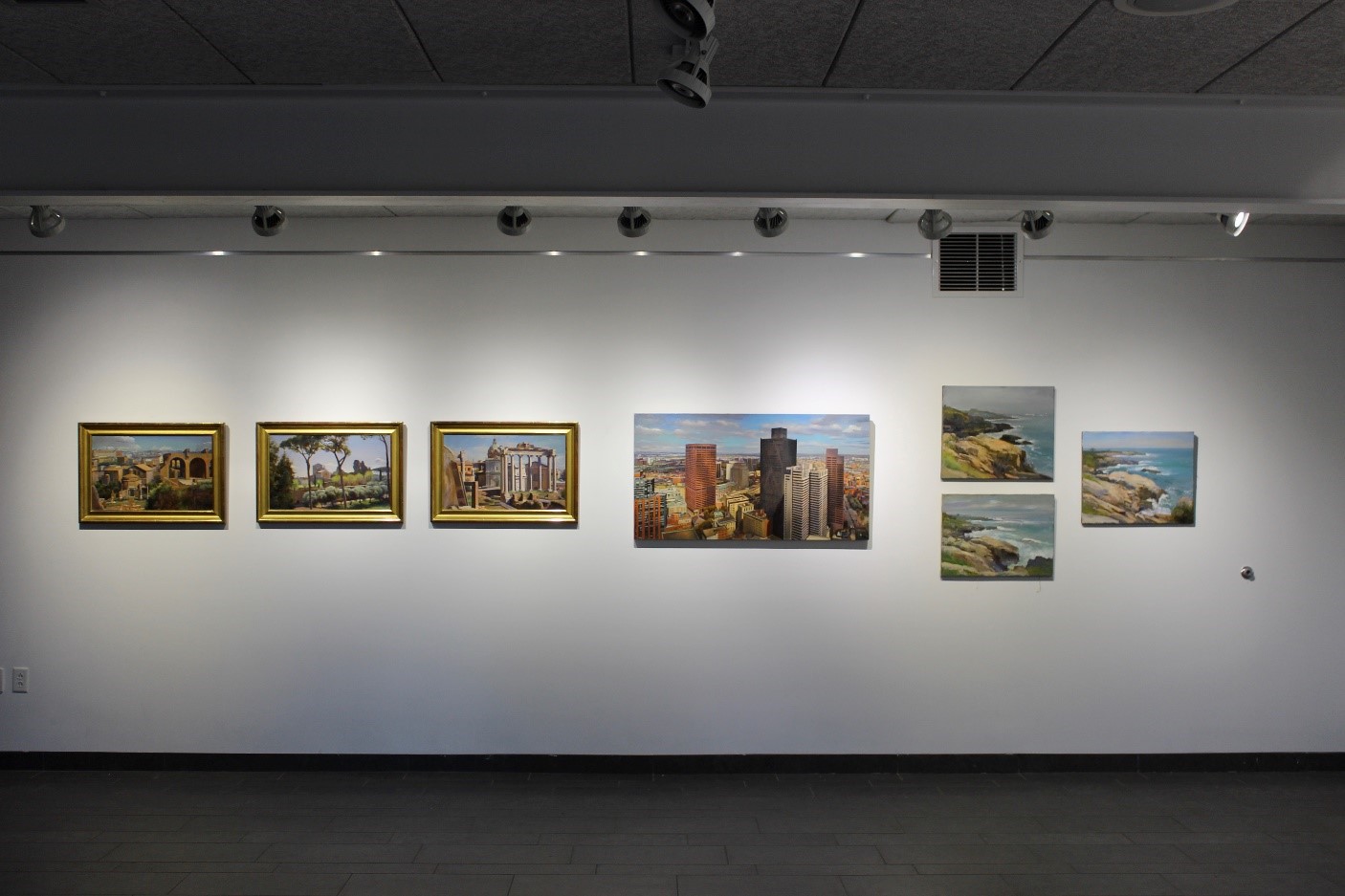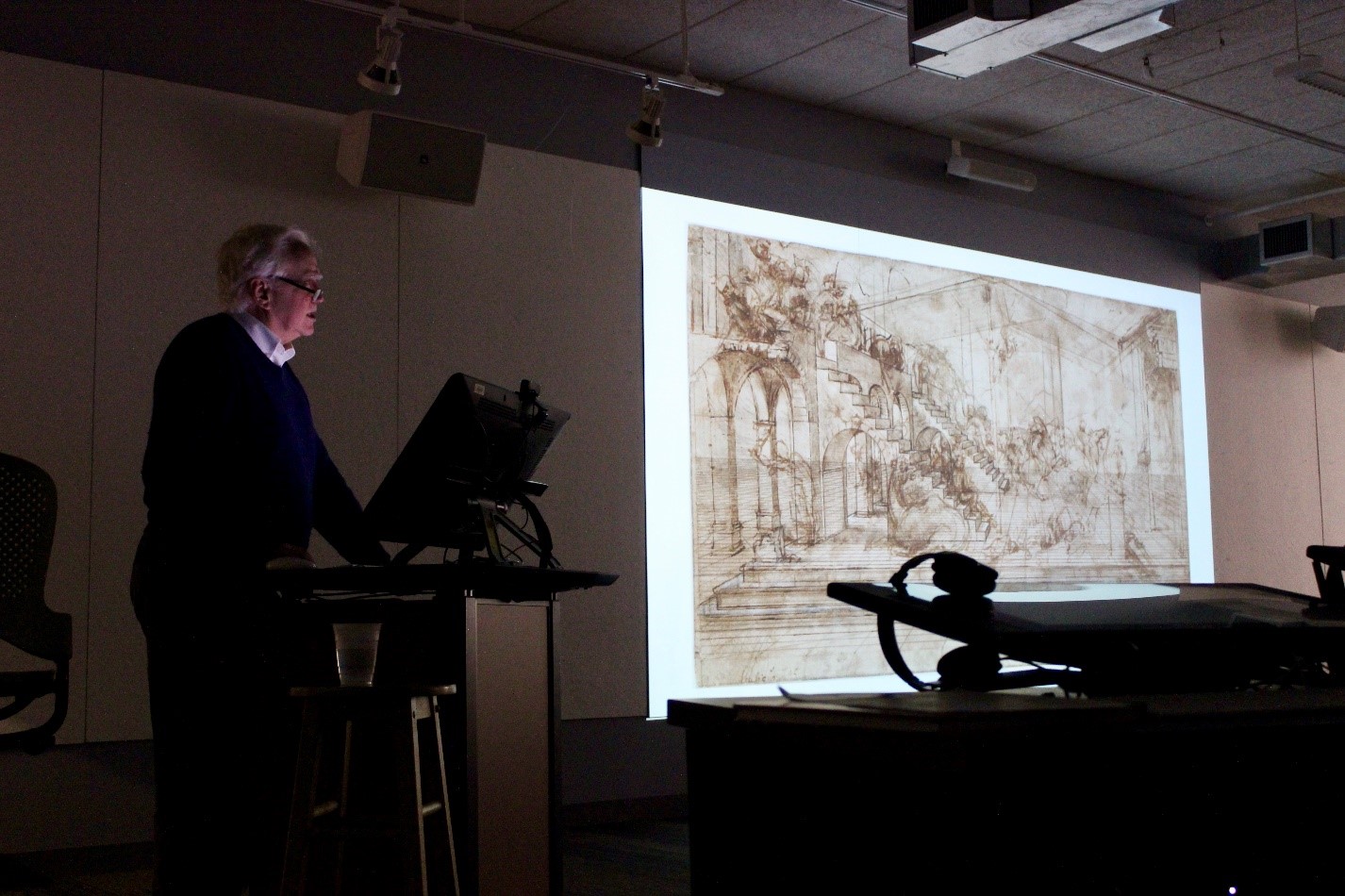Joel Babb at Bowdoin
The Bowdoin Orient–October 12, 2018
Landscape painter Joel Babb explores his Renaissance
OLD IS NEW Maine-based painter Joel Babb finds inspirations in the cityscapes of Boston and captures fleeting sensations in nature. Citing influences from Leonardo, Canaletto and Lorrain, Babb is the modern Renaissance man.
On October 3, Joel Babb, a renowned landscape painter based in Sumner, Maine, presented his art and creative process in the Edwards Center for Art and Dance. Referencing Roman monuments and Baroque landscapes, he guided his audience through his decades-long journey in capturing nature and culture.
As an undergraduate art history student at Princeton in the late 1960s, Babb painted in an abstract manner, producing Surrealist expressions of imaginative fantasies in line with popular tastes at the time. During a seven-month stay in Rome after graduation, Babb began attempting to sketch and paint his surroundings, grappling with representing the world as he saw it.
His stylistic switch from abstraction to realism was inspired by his discovery of Old Master works, a passion that took form while he worked as a night watchman at the Museum of Fine Arts in Boston and enrolled in the Museum School. Navigating his own artistic endeavors, Babb found guidance in the work of Leonardo da Vinci and became fixated on his anatomical sketches. In this early stage of his artistry, he practiced a little bit of everything.
“I had a Renaissance of discovering all the things that Renaissance artists [learned],” Babb said. “I began that same process too, in terms of drawing from Roman architecture and drawing from Roman statues … it’s occurred to me lately that every artist who sets out on his process of becoming an artist should have this period in the Renaissance, trying to rediscover what was in the past, and what was to some extent lost.”
Babb found his calling in the landscape paintings of the greats.
“I really had no ability to capture a landscape in drawing or painting until I discovered Claude [Lorraine’s] drawings,” he said, citing the 17th century French painter as a major influence.
Babb’s world, however, looked vastly different from the Italian ports Lorraine favored. Boston, his city of residence, lacked the wide open skies and mossy ruins of Rome—yet he saw an opportunity for creation. Boston would be his muse.
One particularly breathtaking example of his cityscapes is “Copley Square from 500 Boylston.” Its canvas is filled half with the reflective windows of the John Hancock building, a mirror of the city around it.
To create this piece, Babb spent a lot of time taking 4×5 inch photographs from the roof of 500 Boylston Street in Boston. The work takes on a previously unseen level of detail that he says was inspired by two shows he had seen before doing the painting. The first was an exhibition of the Baroque painter Canaletto, whose epic landscapes depicted both city and country. The second was an exhibition of Richard Estes paintings, a painter whose New York street scenes are almost indistinguishable from photos. Babb used both artists’ techniques of capturing light and defining depth and perspective to create a modern tribute to landscape artists of the past.
Eventually, Babb found the cityscapes and their endless detail exhausting and moved to Maine for a change of scenery. He had been granted some land by a friend and built a studio and home in Sumner. There, his landscapes turned from the brick and cement of Boston to the woods and streams of rural Maine.


